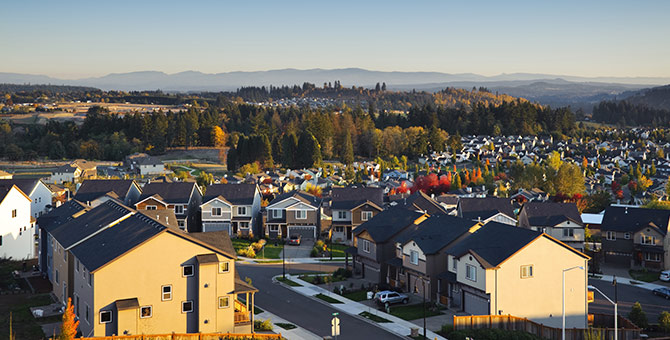2020 was a rollercoaster ride for the real estate industry. In the first quarter, the pandemic prompted the volume of existing single home sales to sink in April and May, while mortgage lender expectations for home prices deteriorated sharply by mid-year. Homebuilder optimism swung back into positive territory later in 2020.
The same cannot be said for commercial real estate (CRE), as it came under some pressure in early 2020 due to the decrease in rent collections between the first and second quarters. CRE vacancy rates increased as we predicted in Q1 but were not distressing. Industrial CRE was the most resilient property type during the pandemic due to accelerated e-commerce trends that drove demand for warehouse properties. CRE lodging is another area severely impacted by COVID-19, evidenced by record-low occupancy rates, though varying by property classification, especially the luxury segment where business travel has shuttered compared with midscale and economy hotels that are performing better.
Looking back, here’s what else our data is telling us about the highs and lows in residential and commercial real estate.
Housing market boomed
- The volume of existing single-family home sales in the West reached a 2009 post-Great Financial Crisis high in October.
- Single-family home prices accelerated sharply in all District states as buyers took advantage of record-low mortgage rates. Consequently, single-family homes appreciated quickly, suggesting apartment-dwellers moving to detached homes.
- As a result of increasing home prices and lower median incomes, housing affordability declined across the District, especially in California. This added to the income inequality seen in many District states.
CRE fundamentals continued to decline
Across the District, CRE vacancy rates increased, particularly in the office and retail segments as absorption rates trailed waning completions. Rents fell across most sectors, except industrial properties. Taken together, these trends could point to increased default probabilities. However, exempting retail and suburban office space, CRE prices remained resilient through the third quarter for many sectors of the economy. We continue to monitor the demand for office space as the length of the pandemic and work from home trends are evolving. Just like for homebuyers, record-low interest rates provided support for CRE prices, as they allowed relative CRE returns to increase despite steady nominal cap rates.
For more details on real estate across the District, visit the full First Glance 12L 3Q20 report.
Image credit: Kativ via iStock.
You may also be interested in:
The views expressed here do not necessarily reflect the views of the management of the Federal Reserve Bank of San Francisco or of the Board of Governors of the Federal Reserve System.
